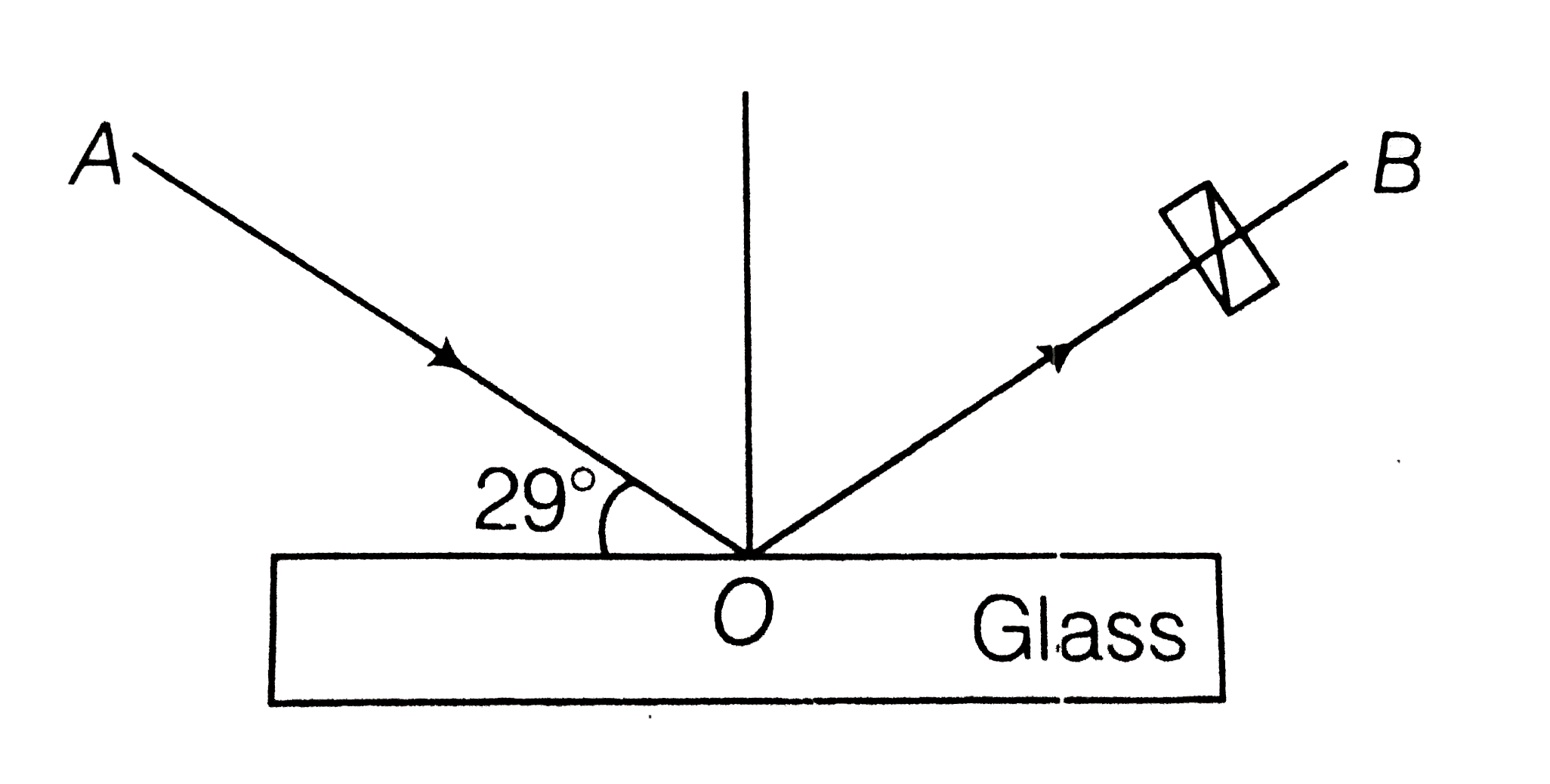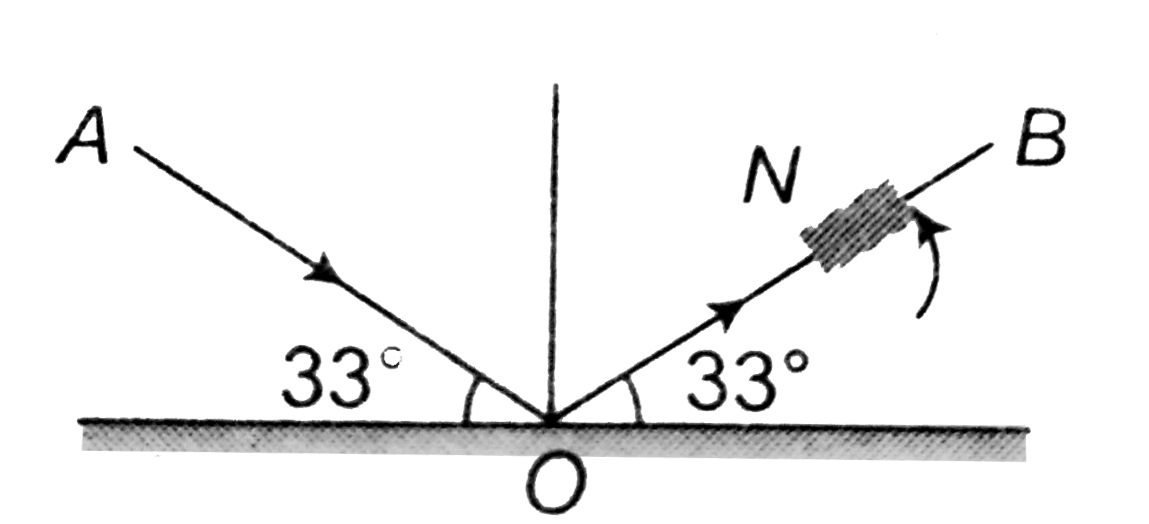A beam of light is incident on a glass slab (μ=1.54) in a direction as shown in the figure. The reflected light is analysed by a polaroid prism. On rotating the polaroid, (tan57∘=1.54)

the intensity remains unchanged
the intensity is reduced to zero and remains at zero
the intensity gradually reduces to zero and then again increase
the intensity increases continuously
Step by step video & image solution for A beam of light is incident on a glass slab (mu = 1.54) in a direction as shown in the figure. The reflected light is analysed by a polaroid prism. On rotating the polaroid, (tan 57^(@) = 1.54) by Physics experts to help you in doubts & scoring excellent marks in Class 11 exams.
Updated on:21/07/2023Topper's Solved these Questions
Similar Questions
A light beam is incident on a rectangular glass plate (μ=1.54) The reflected light OB passes through a nicol prism.
On observing the transmitted light while rotating the prism, it is seen that

View SolutionA ray of light is incident on a parallel-sided glass slab as shown in the figure. The angle of refraction for this ray of light is likely to be :

View Solution
Knowledge Check
A beam of light AO is incident on a glass slab (μ=1.54) in a direction as shown in figure. The reflected ray OB is passed throught a Nicol prism. On viewinf through a Nicole prism, we find rotating the prism that (tan−11.54=57∘)
 Athe intensity is reduced down to zero and remains zeroBthe intensity reduces down some what and rises againCthere is no change in intensityDthe intensity gradually reduces to zero and then again increases
Athe intensity is reduced down to zero and remains zeroBthe intensity reduces down some what and rises againCthere is no change in intensityDthe intensity gradually reduces to zero and then again increasesA beam of light AO is incident a glass slab (μ=1.54) in the direction show. The reflected ray OB is passed through a Nicol prism. On viewing through a Nicol prism, we find on rotating the prism that
 Athe intensity is reduceed down to zero and remains zeroBthe intensity reducees down somewhat and rises againCthere is no change in intensityDthe intensity gradually reduces to zero and then again increases
Athe intensity is reduceed down to zero and remains zeroBthe intensity reducees down somewhat and rises againCthere is no change in intensityDthe intensity gradually reduces to zero and then again increasesA beam of white light is incident on a hollow prism of glass. Then
 Athe light emerging from prism gives spectrum but the bending of all colours is always from baseBthe light emerging from prism gives spectrum, all the colours bend towards the base, the violet must and red and leastCthe light emerging from prism gives spectrum, all the colours bend towards base, the red the least and violet the mostDthe light emerging from prism gives no spectrum
Athe light emerging from prism gives spectrum but the bending of all colours is always from baseBthe light emerging from prism gives spectrum, all the colours bend towards the base, the violet must and red and leastCthe light emerging from prism gives spectrum, all the colours bend towards base, the red the least and violet the mostDthe light emerging from prism gives no spectrum
If unpolarized light falls on a glass plate (μ=1.54) at an incidence angle of 57∘, the reflected light is
View SolutionIf unpolarized light falls on a glass plate (μ=1.54) at an incidence angle of 57∘, the reflected light is
View SolutionA light ray is incident on a glass slab, it is partially reflected and partially transmitted. Then the reflected ray is
View SolutionA beam of light is incident on glass slab making an angle of 60∘ with the surface. The angle of refraction and the velocity of light in glass of R.I. 1.5 are
View SolutionAn unpolarised light is incident upon a glass plate of refractive index 1.54 at Brewster's angle and gets completely plane polarised. The angle of polarisation is (given tan 57∘ = 1.54)
View Solution
